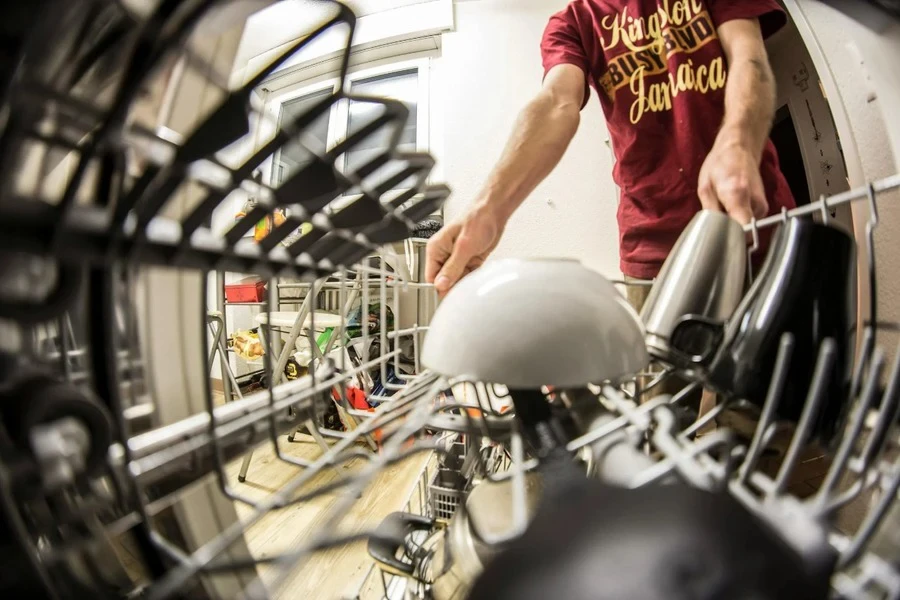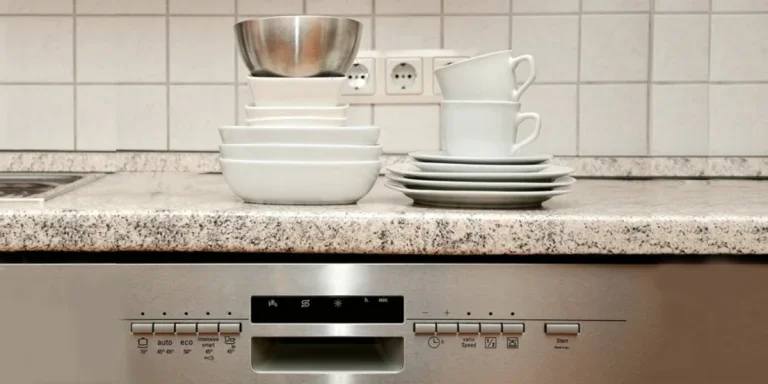Dishwashers are necessary to maintain a clean and hygienic kitchen environment. They are excellent appliances, relieving users from scrubbing dishes for hours. However, dishwashers need regular cleaning and maintenance like any appliance to prolong their lives and save from hefty repairs.
Fortunately, cleaning dishwashers isn’t a tough feat anymore. With the right tools and many readily available products, users can ensure their dishwasher delivers sparkling results.
Read on to learn the most effective ways to clean dishwashers, ensuring they always work at their maximum potential.
Table of Contents
The importance of cleaning dishwashers
Different types of dishwasher cleaners
How often to clean a dishwasher?
Safety considerations when cleaning a dishwasher
Conclusion
The importance of cleaning dishwashers

It may seem like the dishwasher is automatically cleaning itself with the water and cleaners used in it. But this isn’t true. In fact, with every load of dishes, the food, grease, and detergent residue builds up inside the machine. The accumulated grease and grime can produce an unpleasant smell, a dirty appearance and leave the dishes with a film on them.
It goes without saying that a well-maintained dishwasher has a longer lifespan than a neglected one. Cleaning the dishwasher prevents the collection of limescale and food particles, usually at the bottom racks. The extraction of deposits from the entire machine enables a smooth operation.
And let’s not forget the importance of good hygiene!
Scientific studies have found that 100% of dishwashers have bacteria in them. Most of this is near the rubber sealing around the dishwasher parts. The only way to keep the washers from turning into breeding grounds for bacteria is to wash them regularly.
Different types of dishwasher cleaners

Now that we understand the significance of keeping dishwashers clean, let’s understand the step-by-step process of cleaning them:
Clean the food particles
Food scraps left in the dishwasher often cause bad smells. After each wash, check the bottom rack and filter for any debris. Remove it to prevent future odor issues. Also, scrape off food from dishes before loading them. If not running a cycle right away, rinse them or run a rinse-only cycle. Don’t forget to remove any labels from the jars before washing.
Wipe doors and gasket weekly
Dishwashers frequently have greasy residue or splatters at the interior surface of the door, the edges, the handle, or the control buttons. Quickly wipe these with a damp microfiber cloth when you notice them. Use an old toothbrush and soapy water to clean the rubber seal around the door. Wipe the detergent dispensers with a damp cloth to remove any leftover detergent or debris.
Run a cycle with vinegar
Vinegar is a powerful cleaning agent that can cut through grime and dirt. The acidity in vinegar breaks down grease, mineral deposits, and food residue. It also disinfects, killing bacteria and mildew. However, use it carefully as the acidity can harm the rubber gaskets.
The steps to use vinegar to clean a dishwasher are:
- Add a cup of white vinegar to the dishwasher-safe container.
- Keep the open container on the first rack of the dishwasher.
- Run the standard wash cycle.
- Skip the drying step to save energy.
Distilled white vinegar helps with regular clean-ups. It is made up of 5% acetic acid and 95% water. But if it’s been a while since the last clean-up, use cleaning vinegar, which is 20% stronger. Both the vinegar types are distilled, so don’t worry about them discoloring the surfaces.
Add baking soda
Baking soda is a safe and mild alkaline substance that goes a long way in cleaning the stubborn residue left by food. It also takes off the lingering smell in the machine. The steps to clean the dishwasher with baking soda are:
- After the first cycle, sprinkle 1 cup of baking soda on the dishwasher’s floor.
- Skip the drying cycle after running a short warm water rinse cycle.
- Open the dishwasher door to let the air dry its insides.
Vinegar and baking soda are effective dishwasher cleaners, but don’t use them together. Clean with vinegar first, then baking soda.
Deep clean with bleach
Those intending to deep clean their dishwasher should use bleach to remove tough stains, mildew, and mold. Bleach can ruin the insides of a dishwasher if it is made of stainless steel or has any steel parts inside. Less expensive models usually have a plastic lining inside, so there is no harm in using the bleach.
- Pour a cup of bleach into the dishwasher-safe bowl.
- Put the bowl on the first rack of the dishwasher.
- Start a complete wash cycle on your dishwasher.
- Skip the drying cycle at the end.
Caution: Don’t use bleach at the same time when using vinegar or baking soda.
Clean the remaining parts
Modern dishwashers don’t need fully rinsed dishes. Rinsing them can trick the machine into running a shorter cycle, leaving dishes dirty. Scrape off large bits of food to prevent clogging the drain.
Check the drain trap often to prevent bad smells. If it is dirty, remove it and take it apart. Clean it with a sponge or toothbrush and dish soap. The spray arms are another significant component of dishwashers that spray hot water to clean the dishes. The holes may become clogged with food particles. One way to clear them up is using a toothbrush to remove debris stuck inside.
Polish the exterior when needed
A sticky dishwasher surface with hand prints may ruin the look of your entire kitchen space. Use a surface cleaner to remove any stains and keep the exterior of the dishwasher sparkling. The cleaning agents also give a protective finish to the dishwasher.
The cleaner makes your dishwasher shiny and helps prevent future dirt and smudges. Avoid using harsh cleaners or scrubbers that can scratch the surface. Always clean stainless steel in the direction of its grain to avoid streaks.
How often to clean a dishwasher?

The frequency of cleaning the dishwasher depends on its usage and food scraps it handles. Still, a good rule of thumb is to remove food debris and wipe down the surfaces after each use. This prevents unpleasant odors and debris buildup.
Aim for a monthly schedule for deeper cleaning, including descaling and sanitizing with vinegar or bleach. But if there are any of the following signs, it is time for a deeper clean, even if it hasn’t been a month:
- Unpleasant odors
- Visible food debris or grease buildup
- Dishes not coming out clean
- Reduced water flow or drainage issues
We have already shed light on the perks of regular cleaning of the dishwashers. It is a small investment of time that pays off in the long run.
Safety considerations when cleaning the dishwasher

Users must follow a few safety protocols when using dishwashers to reduce the risks of injuries. These are:
- Always read and follow the safety instructions mentioned by the cleaning agents. Pay close attention to warnings and recommended dilutions.
- When handling strong cleaning agents like bleach, wear rubber gloves and eye protection to prevent skin and eye irritation.
- Never mix different cleaning agents, especially bleach and ammonia, as this can create toxic fumes.
- Before cleaning any internal components, unplug the dishwasher from the power outlet to avoid electrical shock.
- Avoid splashing water on the dishwasher’s control panel or other electrical components.
- Wipe away spills to avoid accidental falls or slips.
- Don’t use harsh abrasives or scrubbers that can scratch or damage the dishwasher’s surfaces.
Remember – safety comes first, no matter the appliance you are using. Dishwashers are also machinery that could cause harm if not handled properly. Manufacturers provide a complete list of safety instructions for the products. Ensure that you read them and implement them every time!
Conclusion

The dishwasher is the workhorse of the kitchen. Day after day, it is used to clean even the dirtiest of dishes. Despite being a reliable equipment, it needs proper attention to maintain its functionality. There is no need to call cleaning services or technicians for these regular clean-ups. The article shows that it is pretty easy to do if one understands the process and does it carefully. For more tips on maintaining your products, subscribe to Alibaba.com Reads!




